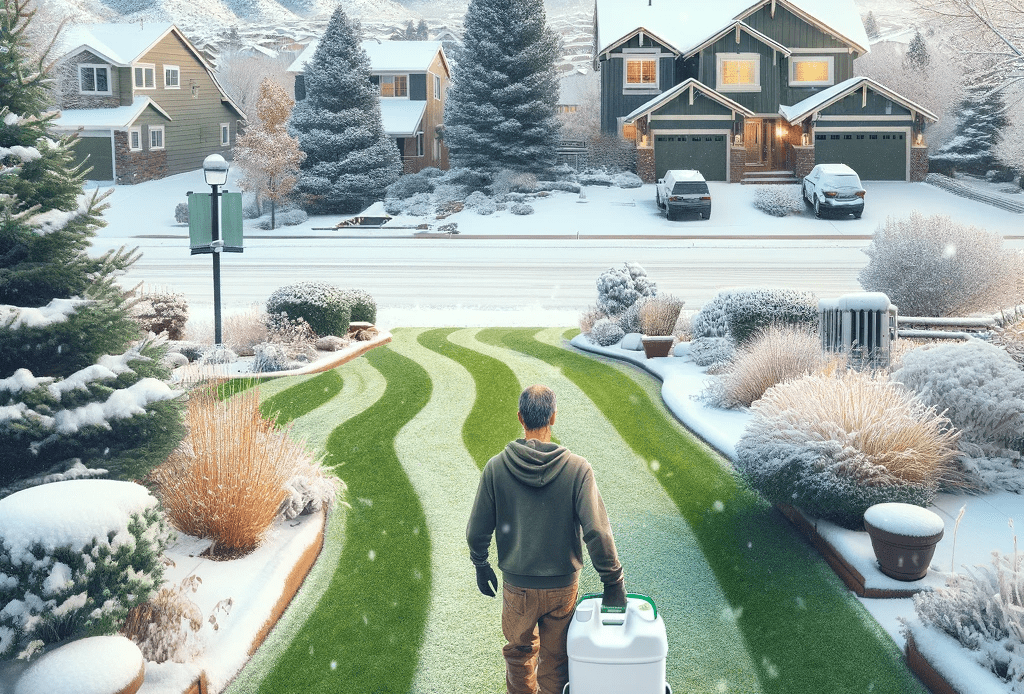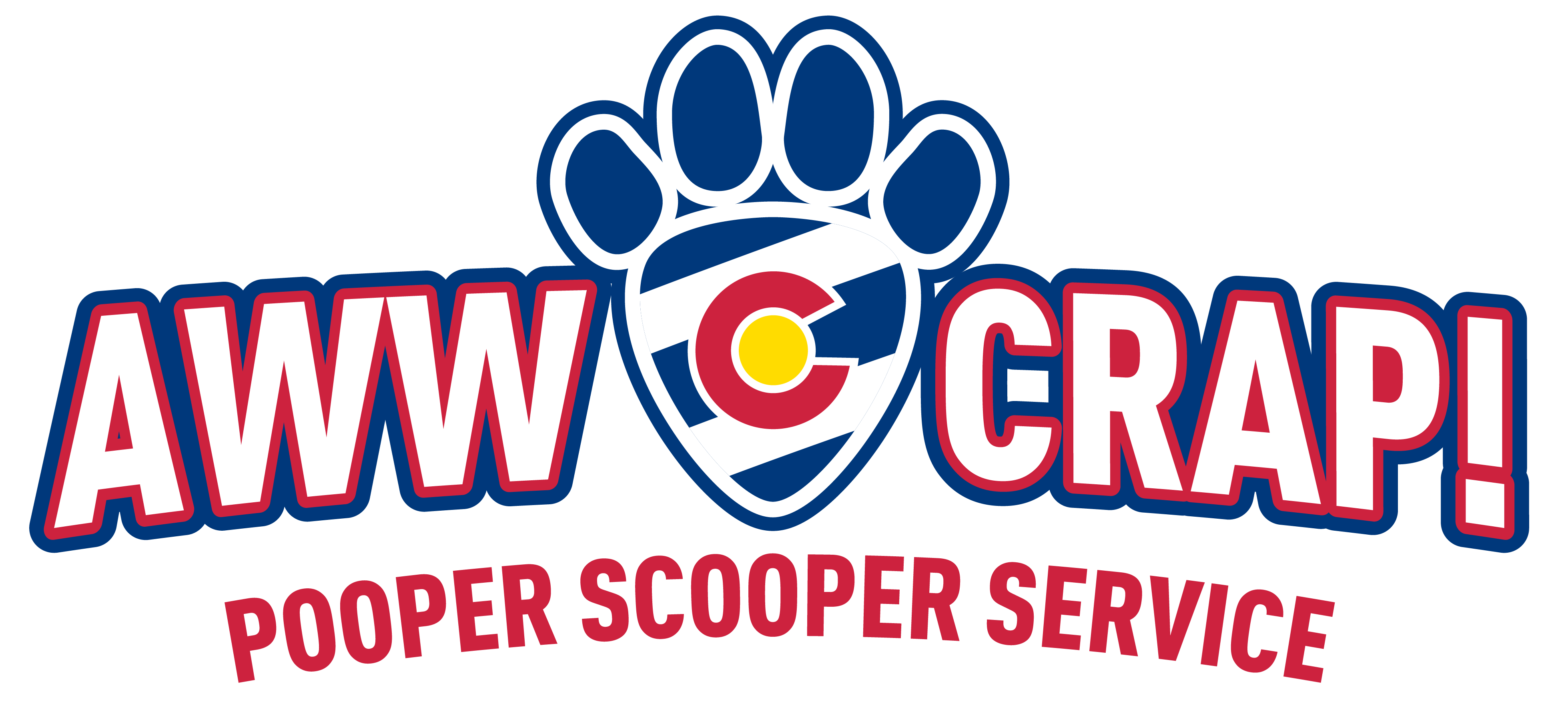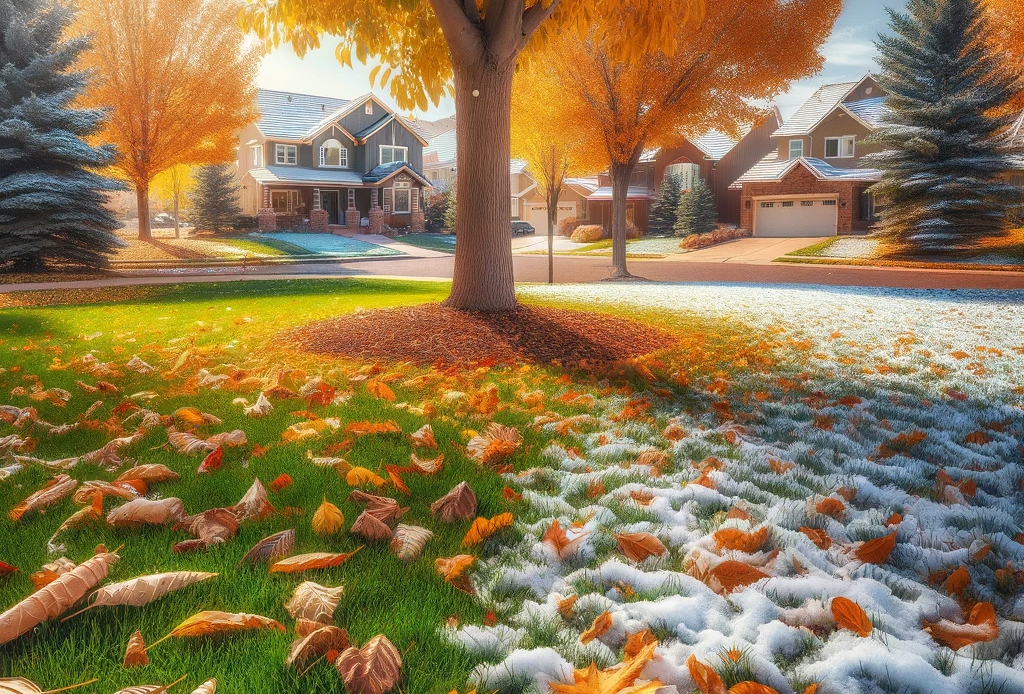As the winter months envelop Colorado, homeowners might assume lawn care can be put on hold until spring. However, proper lawn maintenance during the colder months is crucial for ensuring a healthy and vibrant lawn in the spring and summer. This article outlines key strategies that Colorado homeowners can implement during winter to promote optimal growth in the warmer months.

Understanding Colorado’s Winter Climate
Colorado’s winter climate can be harsh, with cold temperatures and snowfall being common. These conditions can stress lawns, making them more susceptible to damage and disease. The key to winter lawn care is to prepare the lawn for these conditions and to minimize damage during the cold months.
Late Fall Preparation
Fertilization
Before the first freeze, apply a winter fertilizer to your lawn. This helps strengthen the roots and provides essential nutrients that will be stored and used for growth in the spring.
Aeration
Aerating your lawn in the late fall is beneficial. It allows for better penetration of water, nutrients, and air, which are crucial during the dormant winter months.
Mowing
Gradually lower the cutting height of your mower in the fall without scalping the lawn. Shorter grass is less susceptible to winter diseases like snow mold.
Winter Maintenance
Minimize Traffic
During winter, avoid walking on your frozen lawn as much as possible. Grass is brittle when frozen, and excessive foot traffic can weaken and damage the grass blades.
Managing Snow
When shoveling snow, try to distribute it evenly across the lawn to avoid large piles that take longer to melt. This prevents prolonged suffocation of the grass underneath and reduces the risk of mold.
Dealing with De-Icing Salts
Be cautious with de-icing salts near your lawn. Salt can damage grass and soil health. Use alternatives like sand or kitty litter on walkways, and if salt is necessary, choose a lawn-friendly product.
Pre-Spring Preparation
Raking and Cleaning
As the snow melts and the ground thaws, gently rake your lawn to remove debris and dead grass. This will help to aerate the soil and prepare it for new growth.
Assessing Damage
Early spring is a good time to assess any damage your lawn might have incurred during the winter. Look for areas of compaction, snow mold, or rodent damage.
Planning for Recovery
For areas that are damaged or bare, plan for seeding or sodding as soon as the weather permits. Early spring is an ideal time for these activities as the soil is moist and temperatures are mild.
Conclusion
Winter lawn care in Colorado is a critical component of maintaining a healthy, lush lawn throughout the year. By taking proactive steps in the late fall, minimizing damage during the winter, and preparing for the spring, homeowners can ensure that their lawns are well-equipped to thrive in the warmer months. Remember, a little effort during the dormant season goes a long way in achieving a vibrant lawn in the spring and summer.



